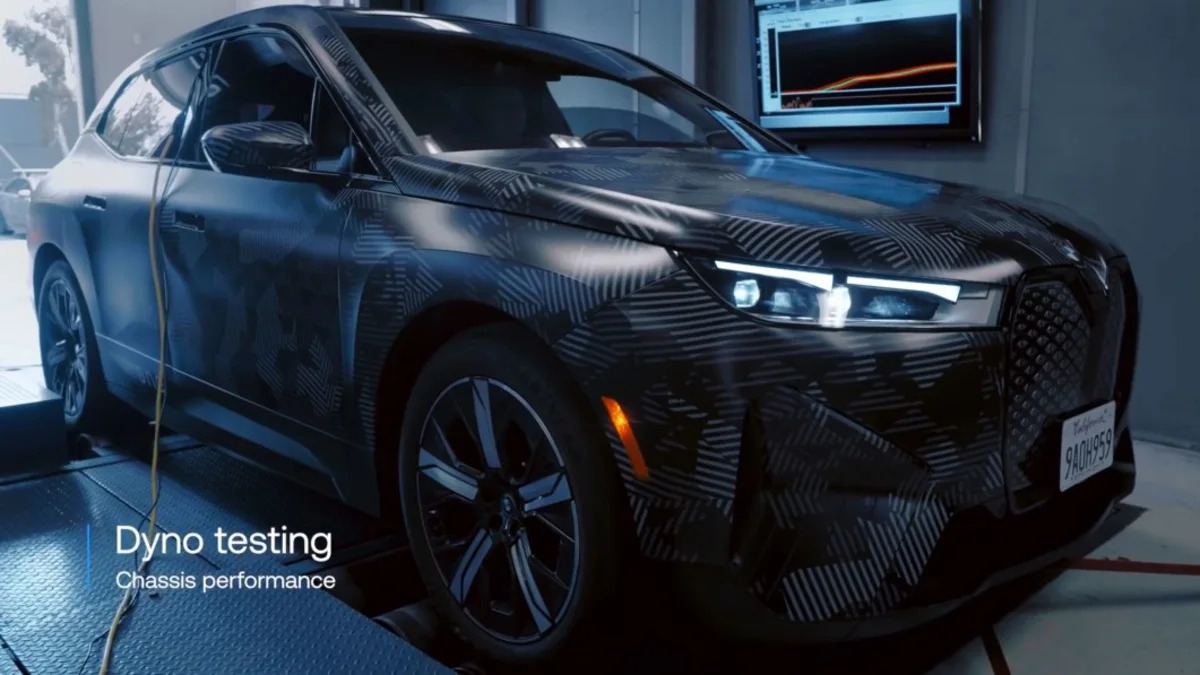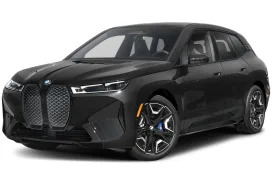Michigan-based energy company Our Next Energy (ONE) put one of its prototype dual-chemistry Gemini batteries in a Tesla Model S last year and drove the sedan 752 all-American miles around in frigid Michigan weather before running out of charge. ONE CEO Mueeb Ijaz is a veteran executive of tech firms like Apple and the former A123 Systems, and told Reuters his new company chose the Model S because "it has fairly high efficiency and a fairly large battery pack." Perhaps because of that demonstration, BMW signed a deal with ONE in June of last year to test ONE's new long-range lithium-ion battery tech in an iX SUV, the goal to reach 600 miles of range according to the European WLTP cycle. The baseline comparison would be the series production iX rated at 257 miles with the 71-kWh pack or 392 miles with the 105-kWh pack. ONE and its Gemini aced the test, driving the iX 608.1 miles on a charge on the dyno, perhaps equivalent to around 500 miles on the EPA cycle.
The dual chemistry pairs a lithium iron phosphate (LFP) module of middling energy density of 441 watt-hours per liter of energy with a second, high-energy, anode-free cell composed of a proprietary chemistry ONE hasn't divulged the composition of, this second module producing 1,000 Wh/L. The two modules are connected by a DC-to-DC converter. The LFP modules power the motors, ONE saying that in the iX, the combined LFP modules are good for about 150 WLTP miles of driving. The combined high-energy modules act like a range extender, passing their energy through the DC-to-DC converter into the LFP modules, thereby powering another roughly 400 WLTP miles of running. Note, this isn't two discrete batteries plugged into one another. Remove the top of the iX's battery enclosure, you'd see rows of modules hooked up with numerous DC converters.
We're told the Gemini's total combined energy can be as much as 185 kWh or more in a typical pack case of 300 to 400 liters (11 to 14 cubic feet). Furthermore, ONE says its chemistry minimizes cobalt, uses up to 20% less lithium, 60% less graphite, and 75% less nickel.
Lithium iron phosphate isn't the most popular chemistry in the U.S., but is likely to get more play here as a less expensive alternative to lithium ion batteries, used in cheaper EVs that don't need extra-long ranges. Ijaz's history with A123 Systems could be a key point in the use of this tech. A Bloomberg eulogy for A123 Systems published in July of this year explained, "Spun out of the Massachusetts Institute of Technology in 2001, A123 was the first company to commercialize lithium iron phosphate batteries, better known as LFP, the stuff Tesla and Ford are using to make EVs cheaper. A123 had a brief shot at becoming a supplier to Detroit automakers back in 2009, when General Motors and Chrysler were pledging to electrify cars in return for a government bailout. The company went public that year on the back of a supply deal with Chrysler and a US$249 million grant from the Obama administration, which was pumping up the economy to prevent the Great Recession from becoming a depression. But range was meagre, gas prices were falling, and American car buyers were rekindling their romance with gas guzzlers. After opening a factory before sales materialized, A123 went bankrupt. Chinese parts maker Wanxiang Group scooped up its remains in 2013."
The Gemini is a ways off from production, the most important step on that path to address the challenges in the way of scaled commercialization. Alongside that development path, ONE says it intends to "radically" improve the efficiency of the DC converter between the two chemistries, increase the durability and safety of the anode-free cell, and refine the algorithms that manage deployment of the range extender battery.



Sign in to post
Please sign in to leave a comment.
Continue